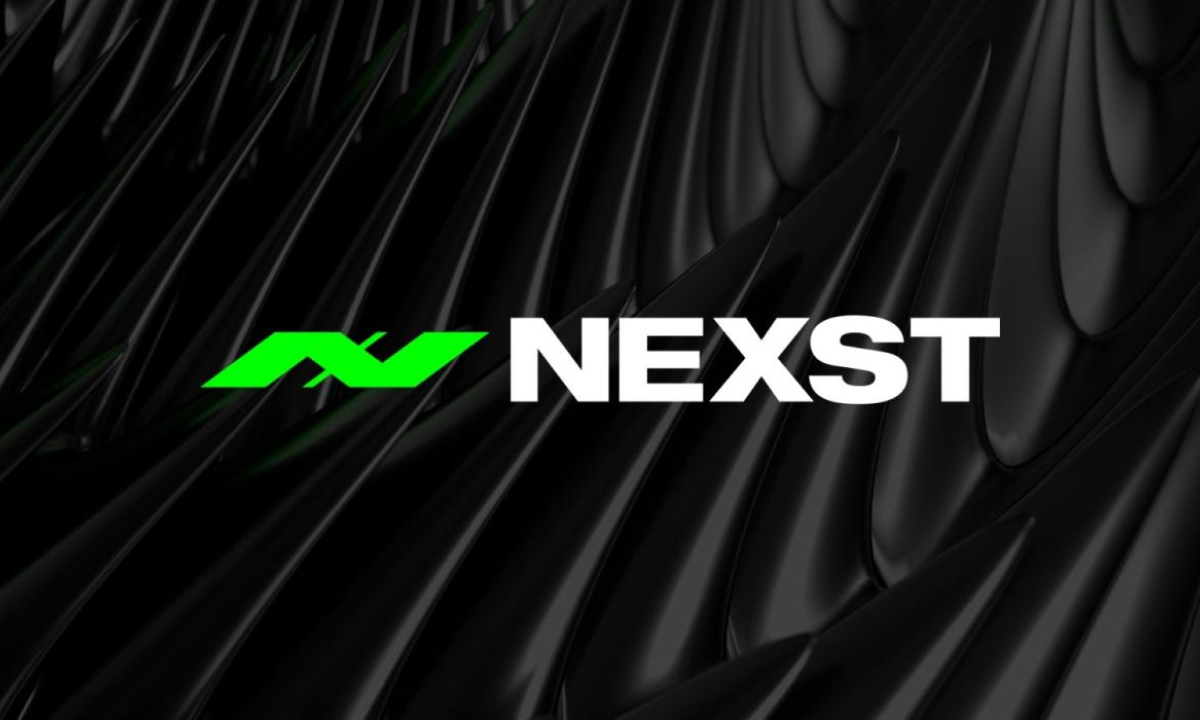BitcoinWorld

Ethereum Treasury Strategy: FG Nexus’s Bold $200M Initiative Unlocks New Frontiers
The cryptocurrency world is constantly evolving, with traditional finance increasingly recognizing the immense potential of blockchain technology. A significant development is capturing attention: the rebranding of Nasdaq-listed Fundamental Global to FG Nexus, accompanied by a monumental $200 million private placement. This substantial capital infusion is earmarked for an ambitious Ethereum treasury strategy, a move poised to reshape how institutions engage with digital assets. Backed by industry giants like Galaxy Digital, Kraken, and Hivemind Capital, this initiative signals a new era of institutional confidence in Ethereum’s robust ecosystem.
What is the FG Nexus Ethereum Treasury Strategy?
FG Nexus has not only rebranded but strategically pivoted its focus towards digital assets. The $200 million raise underscores investor confidence in this new direction. At its core, the Ethereum treasury strategy is designed to generate sustainable returns and diversify exposure within the crypto landscape through two primary pillars:
- Accumulating ETH for Staking Rewards: This involves acquiring a substantial amount of Ether (ETH) and “staking” it. Staking is a process where ETH holders lock up their assets to support the network’s operations, particularly transaction validation. In return, they earn rewards, effectively generating a yield on their holdings while contributing to the security and efficiency of the Ethereum network.
- Exposure to Tokenized Real-World Assets (RWAs): This innovative aspect bridges traditional finance and blockchain. By investing in tokenized RWAs, FG Nexus aims to gain exposure to tangible assets like real estate or commodities, represented as digital tokens on the Ethereum blockchain. This offers benefits such as increased liquidity, fractional ownership, and enhanced transparency for traditionally illiquid assets.
The backing from prominent entities like Galaxy Digital, Kraken, and Hivemind Capital provides not only capital but also significant expertise and validation within the digital asset space, underscoring the credibility and potential impact of this venture.
Why an Ethereum-Based Treasury? The Power of Staking
Ethereum’s transition to a Proof-of-Stake (PoS) consensus mechanism has transformed it into a yield-bearing asset, making it highly attractive for institutional investors. FG Nexus’s decision to center its treasury strategy around Ethereum is a strategic move to leverage this potential. Staking on Ethereum allows participants to lock up their ETH to act as network validators, verifying transactions and adding them to the blockchain. In exchange, they receive newly minted ETH as rewards, generating a consistent yield.
The appeal of staking for an Ethereum treasury strategy lies in several key factors:
- Predictable Yield Generation: Staking offers a relatively consistent income stream, enhancing overall portfolio returns and providing stability amidst market fluctuations.
- Network Security and Participation: By staking, FG Nexus directly contributes to the security and decentralization of the Ethereum network, aligning with a trend of institutions seeking active participation in the ecosystems they invest in.
- Reduced Volatility Exposure: While ETH price can fluctuate, staking is a long-term commitment. This implies a strategy focused on accumulating and holding, potentially reducing exposure to short-term market noise and emphasizing the asset’s long-term utility.
- ESG Alignment: Post-Merge, Ethereum’s energy consumption drastically reduced, making ETH staking a more environmentally friendly option, aligning with growing ESG considerations in institutional investing.
This capability allows institutional treasuries to generate returns from their digital asset holdings in a manner more akin to traditional fixed-income investments, but with the added benefits of blockchain technology.
Unlocking Value with Tokenized Real-World Assets (RWAs)
The second pillar of FG Nexus’s strategy—exposure to tokenized real-world assets—is equally innovative. Tokenized RWAs represent a crucial bridge between the vast value in traditional assets and the efficiency, transparency, and liquidity of blockchain technology. For an Ethereum treasury strategy, this offers immense potential for diversification and new revenue streams.
Tokenized RWAs are digital tokens on a blockchain that represent ownership or a claim on a tangible asset in the physical world. This concept offers several compelling advantages:
- Enhanced Liquidity: Tokenization allows for fractional ownership and easier transfer, potentially creating more liquid markets for traditionally illiquid assets like real estate.
- Fractional Ownership: High-value assets can be broken down into smaller, more accessible units, broadening investment opportunities.
- Increased Transparency: Blockchain’s immutable ledger provides a clear, verifiable record of ownership and transactions, enhancing trust and reducing fraud.
- Global Accessibility: Tokenized assets can be traded globally 24/7, transcending geographical and time-zone limitations.
Integrating RWAs into their treasury strategy means FG Nexus can access a broader spectrum of asset classes, potentially reducing overall portfolio risk while exploring new avenues for growth and yield that are traditionally inefficient or inaccessible.
Who is Backing This Ambitious Ethereum Treasury Strategy?
The credibility of FG Nexus’s venture is significantly bolstered by its investors. The participation of industry heavyweights like Galaxy Digital, Kraken, and Hivemind Capital sends a powerful signal about the maturity and potential of institutional engagement with digital assets, particularly within the Ethereum treasury strategy framework.
- Galaxy Digital: A diversified financial services and investment management company specializing in digital assets. Their involvement brings deep market insight, institutional-grade infrastructure, and a strong track record, signifying belief in the long-term viability of such a strategy.
- Kraken: One of the longest-standing and most trusted cryptocurrency exchanges globally. Kraken’s participation highlights the increasing integration of exchange services with broader institutional investment strategies, especially given their robust staking services.
- Hivemind Capital Partners: A multi-strategy crypto investment firm. Hivemind brings specialized expertise in identifying and capitalizing on opportunities within the digital asset ecosystem, making them a strategic partner for an Ethereum-based treasury.
The combined backing provides not only significant capital but also invaluable strategic guidance, network access, and a stamp of approval that can attract further institutional interest, validating digital assets as a mainstream component of sophisticated financial portfolios.
Benefits and Potential Challenges of This Institutional Move
The launch of FG Nexus’s Ethereum treasury strategy marks a significant step for institutional crypto adoption. However, like any innovative financial endeavor, it presents both unique benefits and potential challenges.
Key Benefits:
- Pioneering Institutional Adoption: Sets a precedent for other traditional financial institutions, demonstrating a structured approach to managing crypto assets.
- Market Validation: A $200 million investment from credible players validates Ethereum’s role as a robust platform for institutional-grade financial products.
- Diversified Yield Opportunities: Staking ETH offers a new yield avenue potentially uncorrelated with traditional markets.
- Bridging TradFi and DeFi: Inclusion of tokenized RWAs directly links traditional finance with decentralized finance, showcasing blockchain’s practical utility.
Potential Challenges:
- Regulatory Uncertainty: The evolving regulatory landscape for crypto, especially for institutional players and novel strategies, remains a key risk.
- Smart Contract Risks: Reliance on smart contracts for staking and RWA tokenization introduces risks like bugs or exploits.
- Market Volatility: While staking offers yield, ETH’s price volatility could still impact overall returns.
- Operational Complexities: Managing large-scale staking and RWA tokenization requires specialized expertise and robust operational frameworks.
Despite these challenges, the strategic backing and careful planning by FG Nexus suggest a calculated approach to harnessing Ethereum’s immense potential.
What Does This Mean for the Future of Institutional Crypto?
The implications of FG Nexus’s bold move extend far beyond their balance sheet. This Ethereum treasury strategy is a powerful indicator of the accelerating trend of institutional capital flowing into the digital asset space, paving the way for a more integrated financial future.
It signifies:
- Mainstreaming Digital Assets: Publicly listed companies committing significant capital to crypto-native strategies validates digital assets as a legitimate asset class for sophisticated portfolios.
- Demand for DeFi Infrastructure: The focus on staking and tokenized RWAs will likely spur further development and demand for institutional-grade DeFi protocols and security solutions.
- Innovation in Treasury Management: Demonstrates a new paradigm where digital assets can be actively managed for yield and diversification, potentially inspiring other corporations.
- Catalyst for Regulatory Clarity: Increased institutional participation will likely pressure regulators to provide clearer guidelines, crucial for long-term industry growth.
- Bridging the Gap: This initiative exemplifies the ongoing convergence of traditional finance (TradFi) and decentralized finance (DeFi), showing blockchain’s benefits being adopted by established financial entities.
FG Nexus’s $200 million commitment is not just a financial transaction; it’s a blueprint for how traditional institutions can strategically engage with the digital economy, moving towards a future where blockchain technology is an integral part of global finance.
The journey of FG Nexus, from Fundamental Global to a pioneer in institutional crypto strategies, marks a pivotal moment. Their audacious $200 million raise, backed by industry titans, is a resounding vote of confidence in Ethereum’s potential. By focusing on a dual approach of ETH staking for yield and exposure to tokenized real-world assets, FG Nexus is not only building a robust treasury but also laying down a critical pathway for broader institutional adoption. This strategic foresight has the potential to unlock unprecedented value, bridging the traditional financial world with the decentralized future and inspiring a new wave of innovation in how assets are managed and leveraged globally.
Frequently Asked Questions (FAQs)
- What is FG Nexus?
- FG Nexus is the rebranded entity of Nasdaq-listed Fundamental Global. It has pivoted its strategy to focus on digital assets, particularly an Ethereum-based treasury strategy, after securing $200 million in private placement funding.
- What does an Ethereum treasury strategy involve?
- An Ethereum treasury strategy, as adopted by FG Nexus, primarily involves two components: accumulating Ether (ETH) for staking rewards to generate yield, and gaining exposure to tokenized real-world assets (RWAs) on the Ethereum blockchain for diversification and new revenue streams.
- Who are the key investors backing FG Nexus?
- The $200 million private placement was backed by prominent players in the digital asset space, including Galaxy Digital, a leading crypto financial services firm; Kraken, a major cryptocurrency exchange; and Hivemind Capital, a multi-strategy crypto investment firm.
- What are tokenized Real-World Assets (RWAs)?
- Tokenized Real-World Assets (RWAs) are digital tokens on a blockchain (like Ethereum) that represent ownership or a claim on tangible assets in the physical world. Examples include real estate, commodities, or art. They offer benefits such as enhanced liquidity, fractional ownership, and increased transparency.
- How does staking Ethereum generate rewards?
- After Ethereum’s transition to Proof-of-Stake, users can “stake” their ETH by locking it up to act as validators for the network. These validators are responsible for verifying transactions and securing the blockchain. In return for this service, they receive newly minted ETH as rewards, effectively earning a yield on their staked assets.
- What are the main risks associated with this institutional crypto strategy?
- Key risks include evolving regulatory uncertainty in the crypto space, potential smart contract vulnerabilities, the inherent price volatility of the underlying asset (ETH), and the operational complexities involved in managing large-scale digital asset portfolios and tokenized RWAs.
Found this deep dive into FG Nexus’s groundbreaking Ethereum treasury strategy insightful? Share this article with your network and join the conversation about the future of institutional crypto adoption!
To learn more about the latest Ethereum trends, explore our article on key developments shaping Ethereum institutional adoption.
This post Ethereum Treasury Strategy: FG Nexus’s Bold $200M Initiative Unlocks New Frontiers first appeared on BitcoinWorld and is written by Editorial Team





